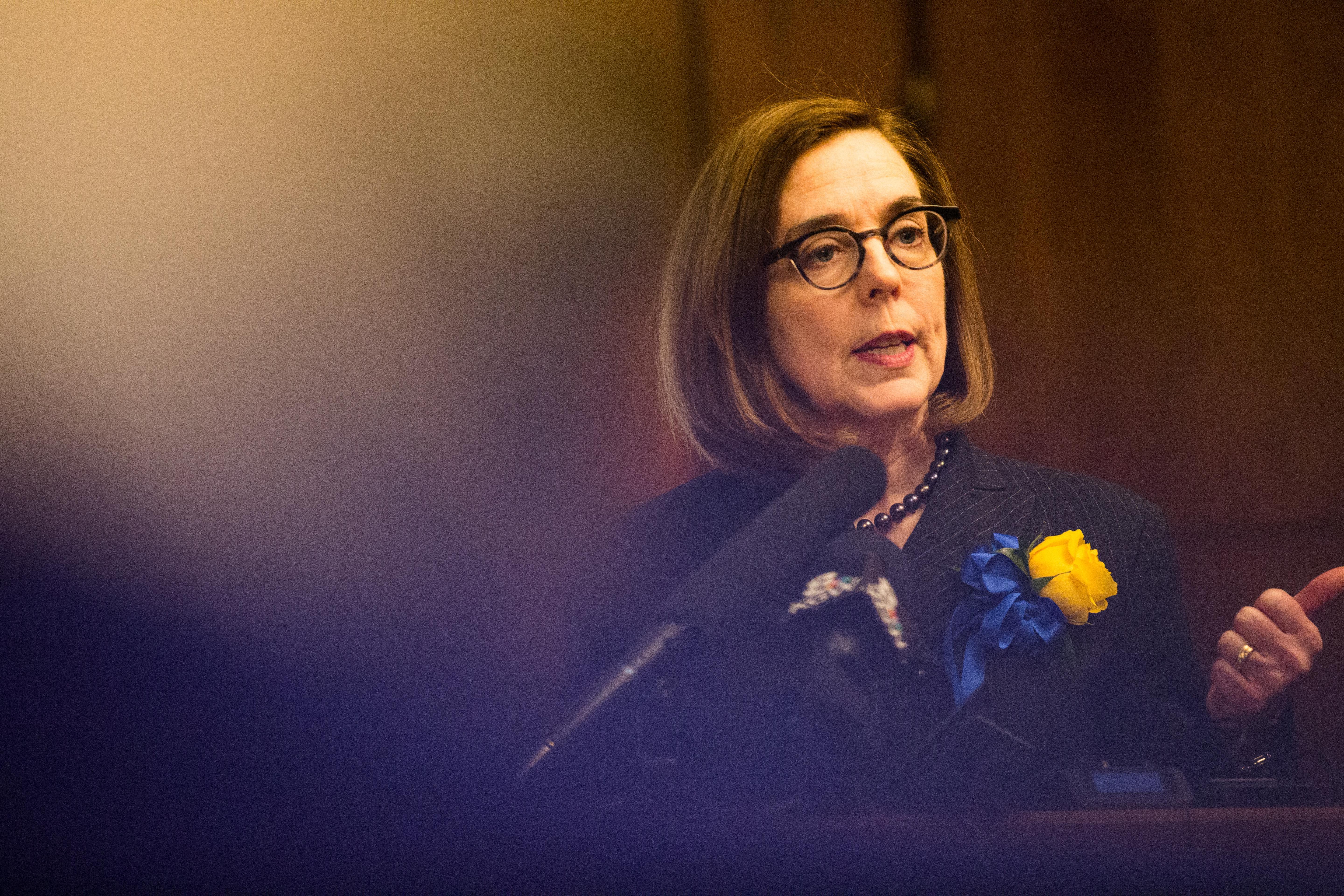
Oregon Gov. Kate Brown is proposing a $200 million workforce development plans. Lawmakers will consider the idea when they meet in February.
Bradley W. Parks / OPB
Oregon lawmakers got their first look Tuesday at a $200 million legislative package being proposed by Gov. Kate Brown’s office to bolster the state’s workforce.
The program, titled “Future Ready Oregon,” aims to prioritize key populations disproportionately impacted by the COVID-19 pandemic and existing disparities in Oregon’s workforce. They include Oregonians of color, women, low-income individuals, rural communities, veterans and those who are incarcerated or formerly incarcerated.
Three specific sectors would benefit from the program: Health care, manufacturing and construction.
Members of Brown’s Racial Justice Council, business groups and labor policy experts developed the program in late 2021 with the central theme of “meeting people where they are.”
That means investing approximately $82 million in existing programs that have shown results in putting people to work. Those include programs administered by the state’s nine regional workforce development boards, community colleges and career-specific apprenticeship programs.
The governor also wants to help especially hard-hit Oregonians by spending $95 million to solve problems that keep people out of the workforce. That includes covering the cost of tuition and fees for school and training programs, transportation, housing, food and childcare costs.
The $12.5 million remaining would help launch initiatives to support those engaged in the program by helping them navigate the benefits available to them and connecting the business community to consortiums set up for each of the three sectors involved.
The total $200 million would be composed of both state general fund monies made up of personal and corporate income taxes, as well as American Rescue Plan Act dollars.
Jennifer Purcell, workforce policy advisor to the governor, told lawmakers that there are specific challenges facing each of the three sectors called out in the package that make them ideal candidates for this proposal.
“For example, in health care: COVID has caused significant burnout among workers and we see some folks leaving the health care workforce,” Purcell said. “On the other hand, manufacturing is one of the sectors where we see persistent skills gaps.”
Purcell said that the construction industry — although booming overall with a 61% increase in employment over the past decade — relies on an aging population in its high-skilled labor force. And while Oregon’s workforce is generally split 50-50 male and female, only 20% of the state’s construction workforce is female.
“These three sectors provide short term pathways to meaningful employment as well as higher earning potential and opportunities for economic mobility in communities across Oregon,” she said.
Patsy Richards, the director of the nursing workforce development company Long-Term CareWorks, said the pandemic has illustrated just how much the state labor market has changed in recent years.
She told lawmakers that the $200 million package could break down barriers for certain Oregonians struggling to enter the workforce – such as helping buy new scrubs for low-income nursing students or paying for childcare for parents in apprenticeship programs.
“By 2030, which is just eight years away, 75% of our workforce will be millennials,” RIchards said. “This is why climbing the corporate ladder does not matter as much to them anymore. A work-life balance is what’s coming into view. ... The workforce has changed, and we need to change with it.”
Lawmakers didn’t provide much reaction to the governor’s proposal Tuesday, but seemed generally in favor of its goals. A few did express minor reservations such as whether the program is applicable to both rural and urban communities of the state.
The proposal will come back before the committee for a work session and formal approval when lawmakers convene in Salem for the short session in February.
Duncan Wyse, president of the Oregon Business Council, called the program a “game changing and exciting” proposal.
“We have immediate needs. Employers need talent right now, and there are a lot of Oregonians who are looking for new careers as they’ve gone through the pandemic,” he said. “(This program) really is trying to reimagine how we provide education and training services to adults.”
Wyse said many of the state’s programs have been designed around getting young adults and teenagers into the workforce – Brown’s plan maintains that goal but combines it with new focus on helping Oregonians who are ready for a career change as well.
He said that the design of this proposal will allow employers to work with schools and training systems and community groups to reimagine how the state delivers those services so that they can be more effective.
Wyse said putting health care, manufacturing and construction at the core of the program helps to meet the workforce shortage in the three sectors where it is most pronounced. Those three sectors, he said, are also critical to the state’s economy and provide great opportunity for high wage jobs attainable in a relatively short amount of time.
Wyse noted that if the program passes during the upcoming legislative session and works, it could serve as a model for future investment into other sectors such as information technology and cybersecurity.
“This addresses immediate needs, but we hope what will come out of this is a roadmap for a 21st century adult workforce career development system,” Wyse said.


